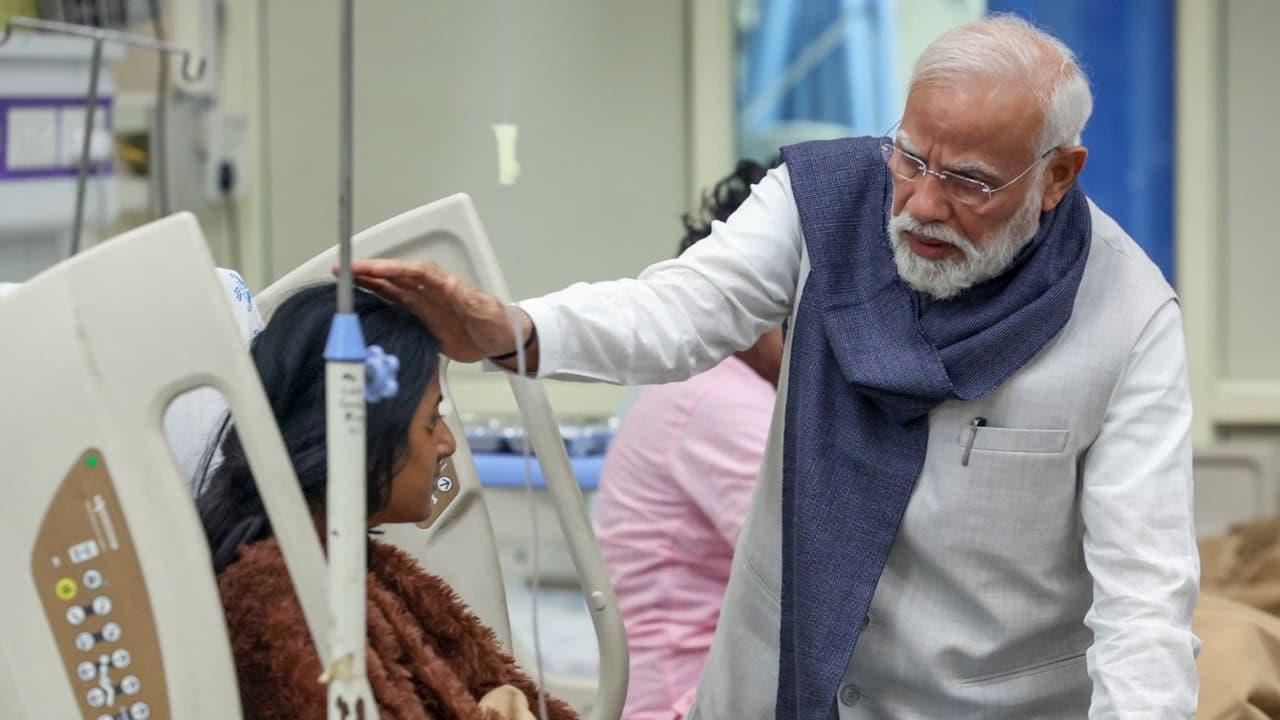
Inside Delhi Red Fort Blast Victims' Post-Mortem: Excessive Bleeding, Ruptured Organs, No Splinter
Initial post-mortem reports from the Delhi blast reveal horrifying internal injuries - ruptured lungs, torn intestines, and crushed skulls - with no shrapnel found. PM Modi visits victims as NIA probes possible Jaish-e-Mohammad terror link.
The aftermath of the deadly explosion near Red Fort has begun to unfold in grim detail. Initial post-mortem findings have revealed the sheer intensity of the blast that tore through the Hyundai i20 car on Monday evening, leaving eight people dead and several others injured near the Lal Quila metro station.
Medical examiners described the injuries as“catastrophic.” Victims suffered multiple fractures, severe head trauma, and extensive internal injuries - the kind of wounds that point to a powerful, close-range explosion.
Initial post-mortem reports indicate that most victims suffered catastrophic internal injuries - from ruptured lungs and intestines to crushed skulls and shattered bones. The force of the explosion was so intense that several victims bore cross-pattern wounds, suggesting they were hurled against hard surfaces by the shockwave. Medical examiners also noted blast wave injuries that affected delicate internal organs such as the lungs, ears, and abdomen. In many cases, eardrums had burst, and lungs had collapsed - clear signs of the pressure impact caused by a high-intensity explosion.
Interestingly, no splinter or shrapnel fragments were found on the victims' clothing or within the wounds - an observation that could point to the use of a compact or improvised explosive device designed for maximum shockwave damage rather than fragmentation. Forensic experts are now conducting detailed analysis to determine the exact type of explosive used. The absence of metallic splinters has raised questions about the nature of the device and its intended impact radius
Most injuries were concentrated on the upper torso, particularly the head and chest. Investigators believe that many victims were within close range of the vehicle when it exploded, leaving them no chance to react or shield themselves. Doctors involved in the post-mortem described a scene of devastating force - broken ribs, deep lacerations, and internal bleeding consistent with a massive concussive wave.
Swab samples collected from the bodies have been sent to the Forensic Science Laboratory (FSL) in Rohini. Early reports confirm that small metal fragments and other foreign particles were found lodged in some tissues, which are now being examined to identify chemical traces of the explosive used.
Simultaneously, DNA samples of the mother of the prime suspect, Dr Umar Un Nabi, have been collected to confirm his identity. Umar is believed to have been driving the i20 car that exploded near the Red Fort on November 10, killing eight people and injuring several others.
Returning from his two-day visit to Bhutan, Prime Minister Narendra Modi headed straight to Lok Nayak Jai Prakash Narayan (LNJP) Hospital to meet those injured in the Delhi blast.
Inside the hospital's trauma ward, doctors briefed the Prime Minister about the condition of the survivors - many still battling serious injuries from the explosion that ripped through a Hyundai i20 car on Monday evening. Modi interacted with the injured and their families, enquiring about their health and assuring them of all possible assistance.
The Prime Minister is expected to chair a high-level Cabinet Committee on Security (CCS) meeting later tonight to review the security situation and the ongoing investigation.
Investigators are piecing together the suspect's movements in the hours before the blast. CCTV footage shows the same Hyundai i20 on both the Mumbai Expressway and the Kundli-Manesar-Palwal (KMP) Expressway before it entered Delhi. Security agencies are reviewing more footage to determine if Umar was accompanied by another vehicle - a detail that could reveal whether this was a solo act or part of a larger, coordinated operation.
With mounting evidence pointing to a terror plot, the Ministry of Home Affairs has officially handed over the case to the National Investigation Agency (NIA). A special team led by senior officers has been formed to investigate what officials now describe as a“terror attack orchestrated by a Jaish-e-Mohammad module.” The NIA is coordinating with both central and state agencies to unearth the broader network and the possible masterminds behind the operation.
As Delhi grapples with the aftermath of the blast, families of the victims await answers - and justice. The post-mortem findings lay bare not just the scientific evidence of what happened that evening, but also the human cost of yet another terror strike in the heart of India's capital. For many, the images of mangled cars, shattered glass, and sirens echoing through the old city streets are reminders of a grim reality - that peace, even at the Red Fort's doorstep, remains fragile.
(With inputs from ANI)
Legal Disclaimer:
MENAFN provides the
information “as is” without warranty of any kind. We do not accept
any responsibility or liability for the accuracy, content, images,
videos, licenses, completeness, legality, or reliability of the information
contained in this article. If you have any complaints or copyright
issues related to this article, kindly contact the provider above.


















Comments
No comment